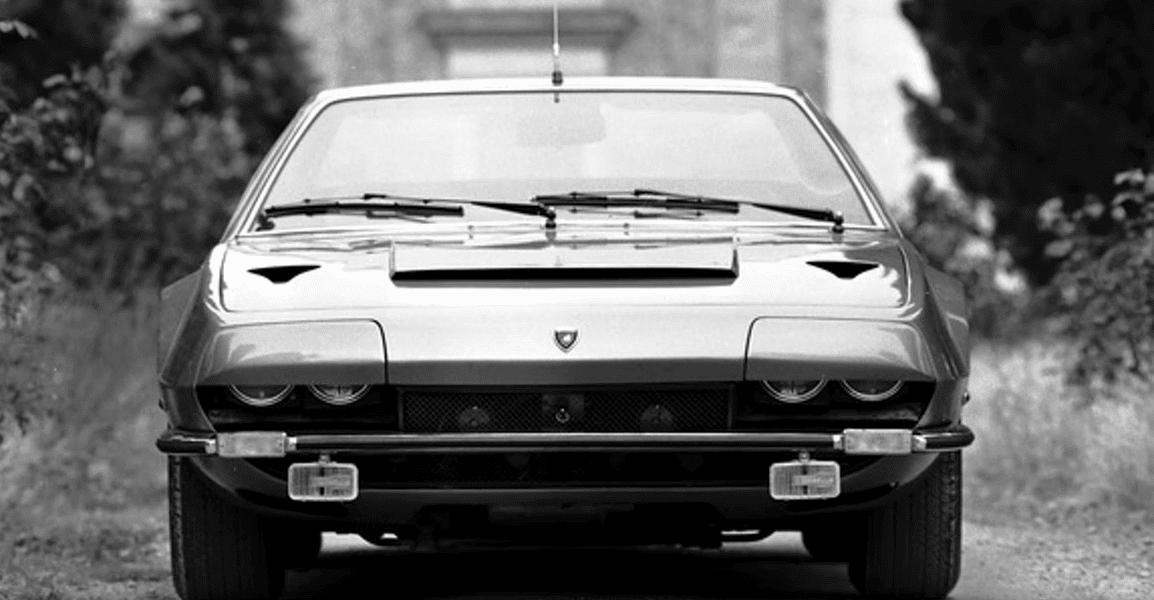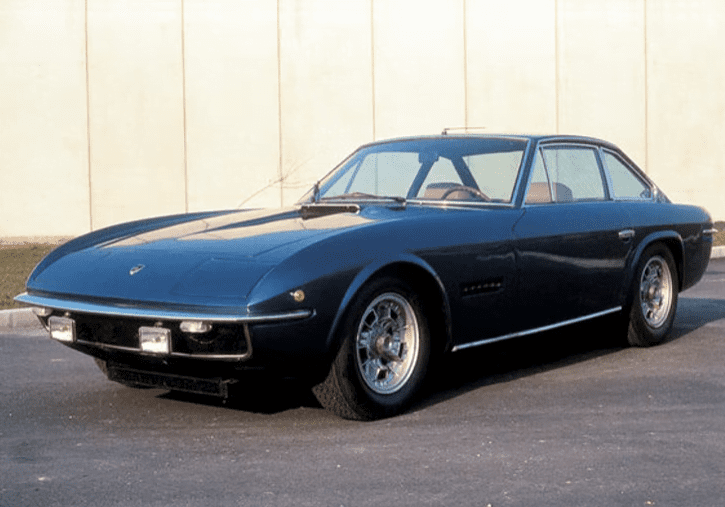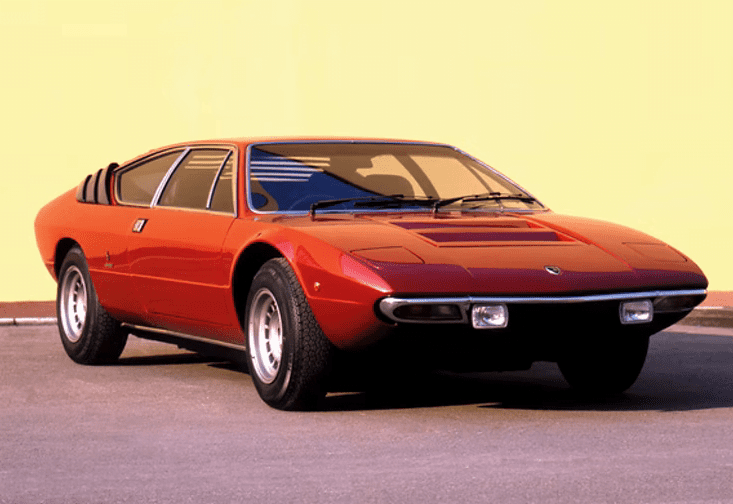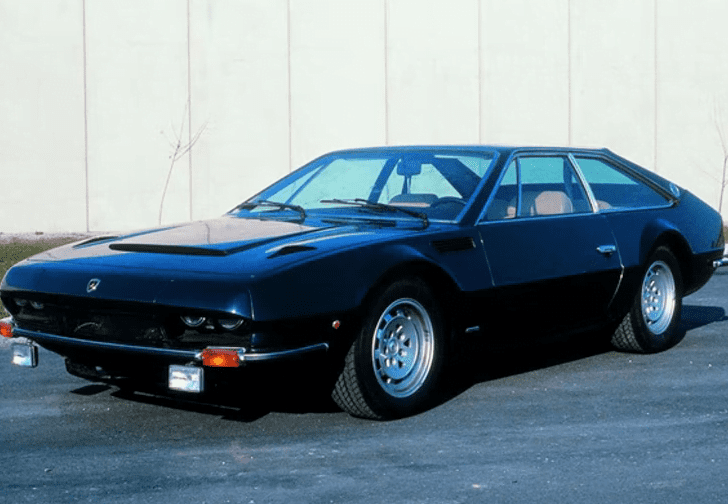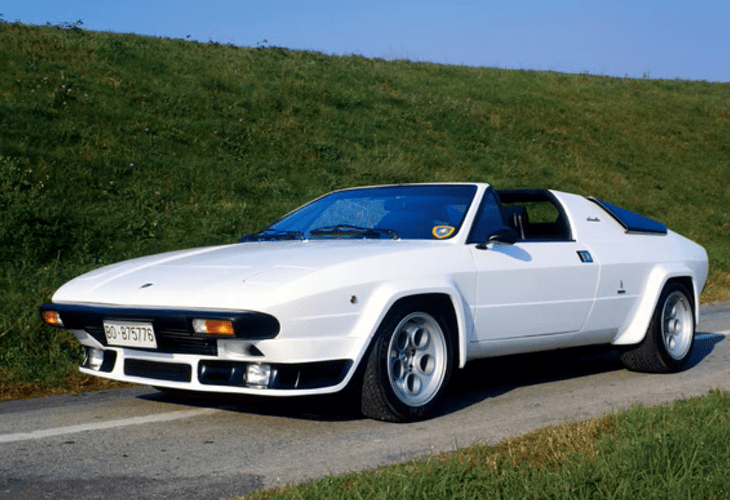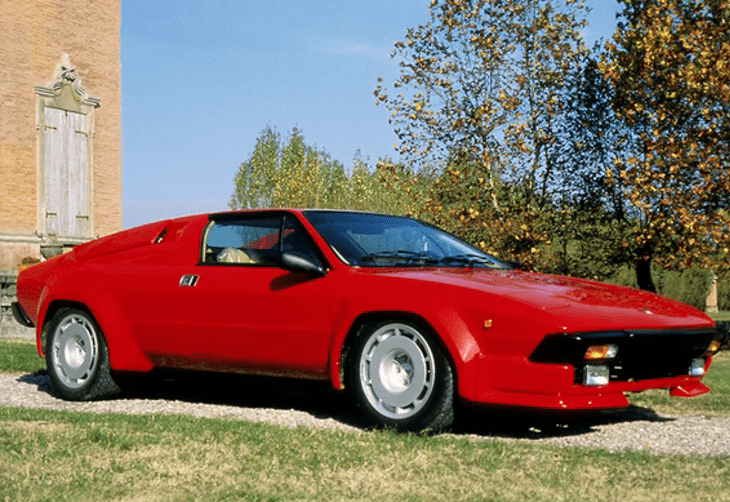Not everything was a V12 with scissor doors
Presumably like many of you, I found myself watching Doug Demuro’s video of the Lamborghini Jalpa a number of moons ago. It made me think that despite Lamborghini being a desirable and celebrated brand in the modern age, if you were to show some of their past models to keen petrolheads, they might not be able to identify what they are.
Whereas most could tell you what a Huracan Performante or some latest edition of the Aventador is, some Lamborghinis did and still fall under the radar.
That’s what this – and some upcoming articles covering different marques – celebrates. The forgotten that were manufactured by the famous.
1. Islero
Image: Lamborghini
Lamborghini’s journey into the world of production cars began with the introduction of the 350GT in 1963, followed by the 400GT a few years later. However, it was the unveiling of the Miura that truly stole the spotlight and captured the hearts of automotive enthusiasts worldwide.
While the Miura garnered significant attention and acclaim, Lamborghini continued to develop its lineup with another remarkable model: the Islero. Often overshadowed by its more famous sibling, the Islero was a grand tourer that catered to a select group of aficionados who appreciated its unique characteristics.
Production of the Islero was limited to just 225 examples, making it an exceedingly rare gem in Lamborghini’s history. It featured a 2+2 seating configuration and was powered by the renowned Bizzarrini 3.9-liter V12 engine. In standard trim, the engine produced 325 horsepower, while the Islero S variant offered an enhanced output of 350 horsepower. With its powerful engine and lightweight construction, the Islero boasted impressive performance figures, including a top speed of over 160 mph and a 0-60 mph acceleration time of just over six seconds.
Although the Islero may have lived in the shadow of its sleeker brother, the Espada, which saw production numbers exceeding 1,200 units, it possessed a distinct allure and charm that appealed to discerning individuals seeking a luxurious yet thrilling driving experience.
The rarity of the Islero becomes evident when comparing its production numbers to that of the Miura. With just 225 Isleros produced, the model’s production run accounts for only a third of the total number of Miuras ever manufactured. This scarcity adds to the mystique and desirability of the Islero among collectors and enthusiasts alike.
In conclusion, the Lamborghini Islero holds a special place in automotive history as a rare and captivating grand tourer. Its limited production, exquisite design, and potent performance make it an underrated gem in Lamborghini’s lineup. While often overshadowed by its more famous siblings, the Islero’s scarcity and unique character contribute to its allure, ensuring its status as a sought-after classic car that stands proudly in the shadow of the iconic Miura.
2. Urraco
Image: Lamborghini
The Lamborghini Urraco was Lamborghini’s response to Ferrari’s Dino, designed as a compact and more affordable model within the Lamborghini lineup. However, unlike the successful production numbers of the Dino, the Urraco struggled to find its place in the market.
While Ferrari produced nearly 4,000 examples of the Dino 206/246 GT, along with a significant number of the 308 GT4s, Lamborghini managed to sell only 791 Urraco units. This low sales figure indicated that the Lamborghini brand, at the time, did not carry the same level of desirability as Ferrari.
The Urraco was available with three engine options: a 2.0-liter, a 2.5-liter, and a 3.0-liter V8. In its top-performing P300 form, the Urraco delivered 250 horsepower, which was comparable to Ferrari’s own 3.0-liter V8 engine of that era. Additionally, the Urraco featured an attractive design, credited as one of Marcello Gandini’s notable works, although it was often overshadowed by the iconic Miura and Countach models.
While the Urraco may not have achieved the same level of commercial success as its Ferrari counterpart, it still offered impressive performance and distinctive styling. Its V8 engines provided exhilarating power, and its aesthetic appeal showcased Lamborghini’s commitment to bold and striking design.
Ultimately, the Urraco holds a unique place in Lamborghini’s history as an attempt to compete in the compact sports car segment. Although it did not enjoy the same level of popularity as the Ferrari Dino, it remains a symbol of Lamborghini’s innovative spirit and serves as a reminder of the brand’s continuous pursuit of automotive excellence.
3. Jarama
Image: Lamborghini
The Lamborghini Jarama, introduced in 1970, served as the successor to the Islero and showcased Lamborghini’s fresh take on their traditional front-engined 2+2 car design. It was developed alongside the Espada and shared the same powerful 3.9-liter V12 engine, delivering an impressive 350 horsepower.
Production of the Jarama was limited to a mere 328 examples, which reinforced Lamborghini’s realization that producing front-engined GT cars was no longer a viable endeavor for the brand. The Jarama’s limited production numbers added to its exclusivity and desirability among collectors.
Similar to the Espada, the Jarama could be equipped with Chrysler’s 3-speed automatic Torqueflite gearbox, although only 150 units were ever optioned with this transmission. An intriguing fact about the Jarama is that it was Ferruccio Lamborghini’s personal favorite among the Lamborghini models. He owned and drove one himself, considering it a “perfect compromise” between the iconic Miura and the practical Espada.
The Jarama represented Lamborghini’s commitment to pushing the boundaries of automotive design and performance, even in the realm of front-engined GT cars. Its combination of elegant styling, potent V12 engine, and the endorsement of its founder contributed to its significance in Lamborghini’s history.
While the Jarama may not have achieved the same level of recognition as the Miura or the Espada, its unique blend of style, power, and practicality continues to captivate enthusiasts. It stands as a testament to Lamborghini’s ability to create compelling and charismatic automobiles that cater to various tastes and driving preferences.
4. Silhouette
Image: Lamborghini
The Lamborghini Silhouette originated as a design exercise but eventually evolved into a full-scale production car that aimed to elevate the performance and appeal beyond its predecessor, the Urraco. However, despite its unique features, the Silhouette faced a challenging market, resulting in limited sales with only 54 units produced.
Powered by the same 3.0-liter V8 engine found in the Urraco, the Silhouette delivered a respectable output of 265 horsepower. This engine provided a thrilling driving experience and helped the Silhouette establish its place within the Lamborghini lineup. Notably, the Silhouette became the first Lamborghini production car to incorporate a targa-style roof, adding a touch of open-top motoring enjoyment.
The distinctive design of the Silhouette set it apart from its sibling, the Urraco. With wide arches and body modifications, the Silhouette possessed a more aggressive and dynamic appearance. These visual cues made it relatively easy to differentiate the Silhouette from its less powerful counterpart, creating a visual statement of its enhanced performance potential.
While the Silhouette may not have achieved significant commercial success, it remains an intriguing chapter in Lamborghini’s history. Its limited production numbers and distinctive design make it a sought-after collector’s car today. The Silhouette’s role as a stepping stone between the Urraco and subsequent Lamborghini models showcases the brand’s continuous pursuit of innovation and performance.
Although overshadowed by its more iconic siblings, the Silhouette stands as a testament to Lamborghini’s willingness to explore new directions and push the boundaries of automotive design and engineering.
5. Jalpa
Image: Lamborghini
The Lamborghini Jalpa emerged as the successor to the Urraco, positioning itself as Lamborghini’s entry-level sports car. It shared a platform with the Urraco and even drew design inspiration from the Silhouette.
Embodying the spirit of the 1980s, the Jalpa was not only stylish but also incredibly rare, with a production run of only 410 units. This made it significantly rarer than its larger sibling, the Countach, and added to its exclusivity and desirability among collectors. Under the hood, the Jalpa featured a 3.5-liter version of the Urraco’s V8 engine, delivering a respectable output of 250 horsepower. This power output allowed the Jalpa to rival its contemporary counterparts from Ferrari, namely the 308 and 328 models.
However, the Jalpa’s production came to an end when Chrysler acquired Lamborghini in the late 1980s. The arrival of new ownership marked a shift in Lamborghini’s direction, leading to the discontinuation of the Jalpa. It wasn’t until the introduction of the Gallardo, a much more modern and successful model, that Lamborghini reintroduced a true entry-level sports car to its lineup.
Despite its limited production and relatively short lifespan, the Jalpa left a lasting impression as a rare and distinctive Lamborghini model. Its design, performance, and rarity contribute to its appeal among enthusiasts and collectors who appreciate its unique place in Lamborghini’s history.
6. Cheetah
The Lamborghini Cheetah is often overshadowed by its more famous sibling, the LM002, which gained notoriety as Lamborghini’s off-road military-inspired vehicle. However, it was the Cheetah that served as the precursor to the LM002, showcasing Lamborghini’s initial foray into the world of all-terrain vehicles.
Developed in collaboration with Mobility Technology International (MTI), the Cheetah project emerged from a contract with the U.S. military to create a new all-terrain vehicle. The initial production of the Cheetah took place in San Jose, California, before the prototypes were sent back to Lamborghini in Italy for the final touches and refinement.
Powering the Cheetah was a rear-mounted 5.9-liter Chrysler V8 engine mated to a 3-speed automatic gearbox. However, the combination of this powertrain with the heavy 2-ton fiberglass body resulted in poor handling and performance dynamics. Ultimately, the U.S. military awarded the contract to AM General, who went on to develop the iconic Humvee, leaving the Cheetah project discontinued.
The cancellation of the Cheetah project, coupled with financial challenges at Lamborghini, also led to the termination of the partnership with BMW to produce the M1 supercar. The intricate story of how the BMW M1 came to be deserves its own dedicated article.
Nevertheless, the Cheetah marked an important milestone in Lamborghini’s history, representing their initial exploration of off-road vehicles. It laid the foundation for the development of the LM002, which would later become an emblematic symbol of Lamborghini’s boldness and ability to push the boundaries of automotive design and performance.
What is your favourite Lambo?
FAQ: Classic Lamborghini
What is the most classic Lamborghini?
The Lamborghini Miura is often considered one of the most classic and iconic Lamborghini models. Introduced in 1966, the Miura is known for its stunning design, mid-engine layout, and high-performance capabilities. It is widely regarded as one of the first true supercars and has left a lasting impact on the automotive industry.
How much does a classic Lamborghini cost?
The cost of a classic Lamborghini can vary significantly depending on factors such as the specific model, condition, rarity, and desirability among collectors. Prices for classic Lamborghini models can range from several hundred thousand dollars to several million dollars or more for the most sought-after and rare examples.
What is the oldest Lamborghini model?
The Lamborghini 350 GT is the oldest Lamborghini model. It was the first production car produced by Lamborghini and made its debut in 1964. The 350 GT featured a V12 engine and marked the beginning of Lamborghini’s legacy as a manufacturer of high-performance sports cars.
What is the most expensive classic Lamborghini?
The most expensive classic Lamborghini models can reach multi-million-dollar price tags, especially for limited editions and highly sought-after examples. Some of the most expensive classic Lamborghini models include the Lamborghini Miura P400 SV, Lamborghini Countach LP400 Periscopica, and Lamborghini Miura SVJ.
Which is the cheapest Lamborghini?
Among modern Lamborghini models, the Lamborghini Urus SUV is generally considered the most affordable option. However, in the context of classic Lamborghini models, prices can vary significantly depending on the specific model, condition, and rarity. It is advisable to consult with experts and conduct thorough research to determine the current market value of a particular classic Lamborghini.
What is the rarest Lamborghini car?
The Lamborghini Veneno is considered one of the rarest Lamborghini cars ever produced. Only a limited number of Veneno models were built, with a total production of only a few units. The Veneno is known for its extreme performance, aggressive design, and exclusivity.
What is the coolest Lamborghini ever made?
The Lamborghini Countach is often regarded as one of the coolest Lamborghini models ever made. Introduced in the 1970s, the Countach features futuristic and angular styling that became synonymous with the Lamborghini brand. Its striking design, scissor doors, and powerful performance have captured the imagination of car enthusiasts for decades.
What is the rarest supercar ever?
The Jaguar XJ220 is often considered one of the rarest supercars ever produced. It was introduced in the early 1990s and featured a limited production run. Only a small number of XJ220 models were built, making it highly sought-after by collectors and enthusiasts.
The Ferrari P4/5 by Pininfarina is indeed one of the rarest and most exclusive supercars ever produced. It was commissioned by James Glickenhaus and built by Pininfarina based on the Ferrari Enzo platform. Only one unit of the Ferrari P4/5 was ever created, making it a unique and highly sought-after collector’s car.
However, it’s worth noting that rarity can be subjective and depends on various factors, including production numbers, limited editions, and special variants. Other supercars, such as the Lamborghini Veneno, McLaren F1 LM, and Bugatti La Voiture Noire, are also considered extremely rare and highly valuable.
What is the legendary Lamborghini?
The Lamborghini Miura is often regarded as a legendary Lamborghini model. Its groundbreaking design, powerful performance, and influential impact on the automotive industry have earned it a legendary status among car enthusiasts and collectors.

